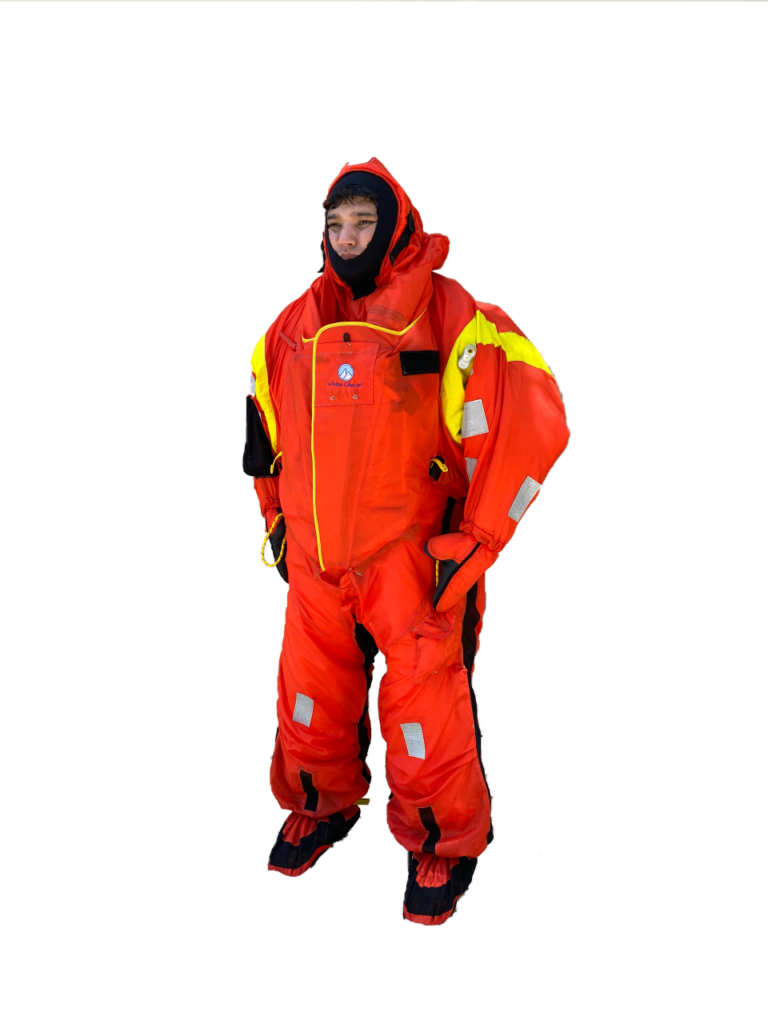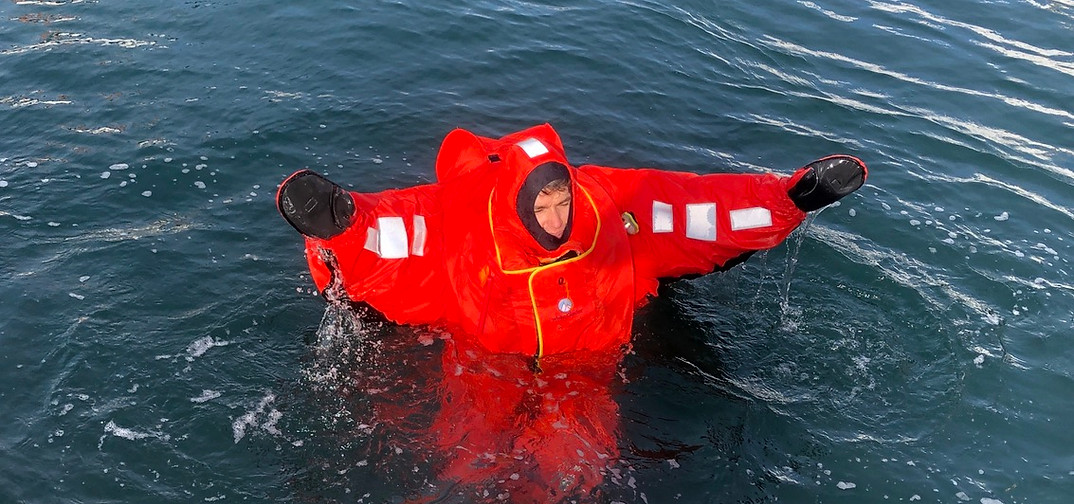Test results for White Glacier’s newest survival suit, the Arctic 10+ PC, were recently released. Tests were conducted in August of this year at a facility in Trondheim, Norway. The test conditions far exceeded current standards and regulations. No other suit on the market has yet to test under these conditions.

Specially prepared to comply with the Polar Code, the Arctic 10+ PC is specially beefed-up with thermal configuration, internal pockets (urination kit, light, survival equipment), and suspenders for surviving on an ice float, or on land in the Polar regions.
The White Glacier Arctic 10+ PC offers the highest thermal protection available in an immersion suit / survival suit. Fatalities due to extended periods in cold water have been reported from many sea accidents and thus, thermal protection is a highly critical and important performance metric for immersion suits.
During testing and evaluation, the subject wearing the suit were exposed to different water temperatures for different durations or time. However, none of the international test standards have test procedures specifying test conditions with water temperatures below 2 °C, air temperatures below +10°C, or with any wind chilling effect.
Accidents at sea can take place at any time during year, including winter, when victims could be exposed to much harsher conditions than the conditions established for the approval testing of an immersion suit.
White Glacier has had excellent results whenever thermal protection tests specified by international standards have been performed on their various models of insulted immersion suits. So, measures were taken to up the ante and see how they would cope in much more extreme cold weather situations.
EXTREME COLD-WATER TESTING
The extreme cold weather test was performed in a pool where the water temperature was kept at 0.0 °C white the air temperature above the water was -20 °C. There was also a fan blowing wind over the test subject at a wind speed of 10 km/hour. The combination of the air temperature and the wind speed resulted in a wind chill exposure of -30 °C.
The test subject was immersed for 6 hours under these conditions and demonstrated the new Arctic 10+ PC immersion suit provides excellent protection against such cold conditions. The suit complied fully with the requirements for thermal protection of insulated immersion suits as specified in MSC.81(70), even under such extreme conditions.
The test was limited to 6 hours for ethical reasons, but the results obtained during this period indicate that the subject would have been satisfactorily protected for a considerably longer period.
The test was also performed with White Glacier’s signature built-in SPLASH TENT fully deployed with measurements on the forehead of the subject taken showing a consistent 20°C, allowing the subject to breath warm air, even in arctic conditions.
“This is an incredible result when you consider that the water in the test pool had frozen into ice and you had to knock loose ice from the suit to get the test subject out from the test pool,” said White Glacier CEO Diego Jacobson.
“I have every confidence that survivability in the Arctic 10+ PC can go well beyond the 6-hour mark in ice water permitted in testing, given how well the subject held up and reported no discomfort. I’d go as far to say that the Arctic 10+ PC is the global leader in survival suits and must be the product of choice for those industries that require their workers to enter polar and arctic conditions, or even other cold-water environments,” Jacobson said.
Even in temperate waters, the temperature regulating aspect of the Splash Tent allows White Glacier suits to remain comfortable, yet fully protected in an instant, should the temperature drop. It is well known that comfort is a very important feature in survival gear as it can significantly improve a user’s will-to-live.
For further information visit www.whiteglacier.com.

